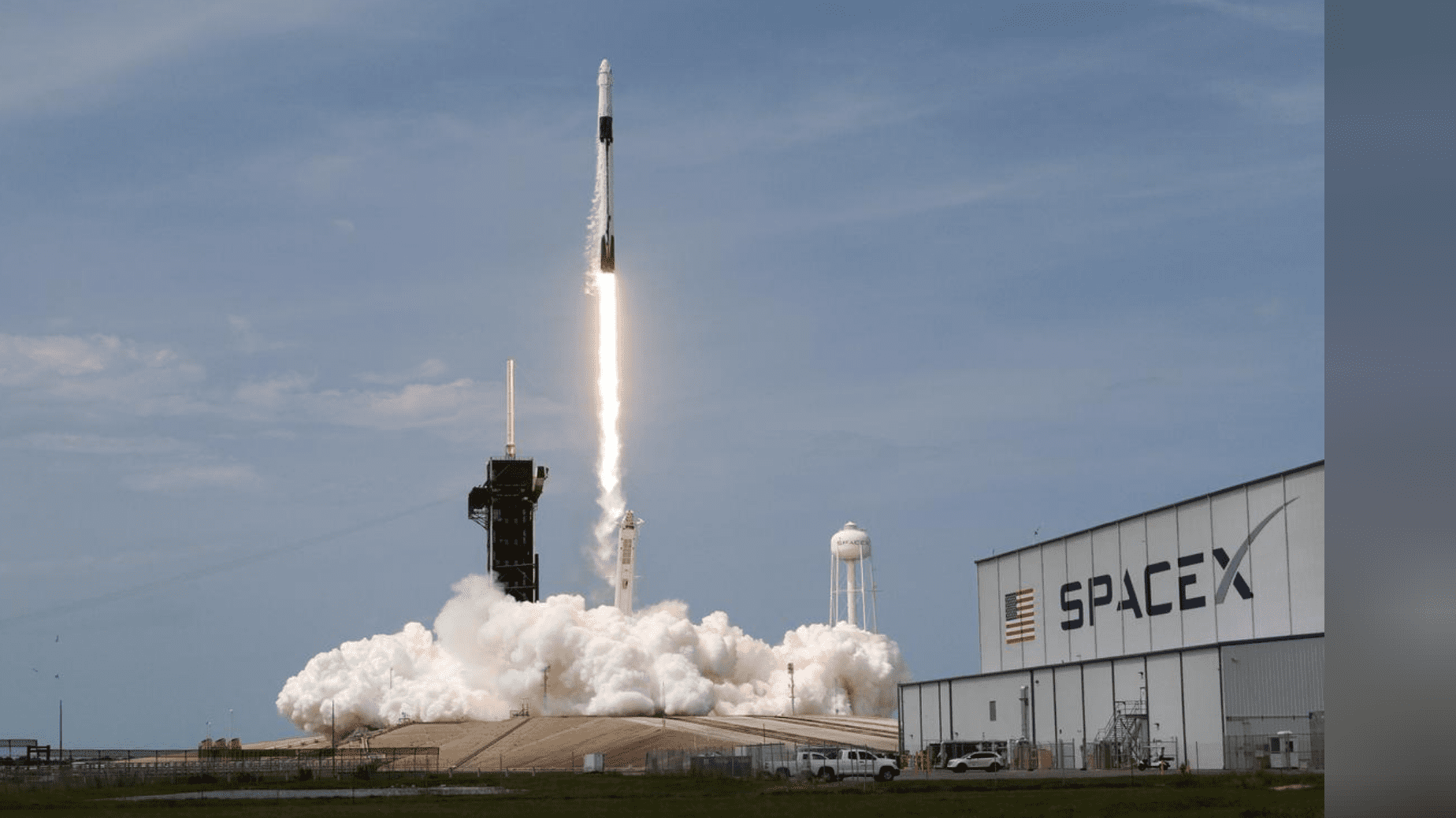
Space exploration has always captivated the imagination of humanity, pushing the limits of our understanding of the universe. While astronauts and their daring missions often steal the spotlight, one aspect of space exploration that often goes unnoticed is the intricate infrastructure required for space launches. From towering rocket launch pads to cutting-edge tracking systems, the space launch infrastructure plays a crucial role in enabling us to reach for the stars.
In this article, we will delve into 13 intriguing facts about space launch infrastructure that showcase the incredible engineering and technological feats involved in sending rockets into space. From mind-boggling statistics to remarkable historical milestones, these facts shed light on the fascinating world behind the scenes of space launches.
Key Takeaways:
- Space launch infrastructure has a rich history, from the first launch in 1957 to the development of the largest rocket, the Saturn V. It’s a marvel of human achievement and collaboration.
- The future of space launch infrastructure is exciting, with reusable rockets like SpaceX’s Falcon 9 leading the way. This innovation is making space exploration more affordable and accessible for everyone.
The First Space Launch Took Place in 1957
The journey of space exploration began on October 4, 1957, with the launch of the Soviet satellite Sputnik This historic event marked the first human-made object to orbit the Earth and set the stage for future space missions.
The Largest Rocket Ever Built is the Saturn V
Standing at a staggering height of 363 feet, the Saturn V rocket remains the tallest, heaviest, and most powerful rocket ever built. Developed by NASA for the Apollo program, it successfully delivered astronauts to the moon.
Space Launch Complex 40 is used by SpaceX
SpaceX, the private aerospace company founded by Elon Musk, utilizes Space Launch Complex 40 at Cape Canaveral Space Force Station for its Falcon 9 rocket launches. This state-of-the-art facility has played a crucial role in advancing space exploration.
Kennedy Space Center is the Largest Spaceport in the United States
Located on the east coast of Florida, Kennedy Space Center is not only the largest spaceport in the United States but also serves as the main hub for NASA’s human spaceflight missions. It has been the launch site for numerous historic space missions, including the Apollo moon landings.
Baikonur Cosmodrome is the Oldest Spaceport in the World
Situated in Kazakhstan, Baikonur Cosmodrome holds the distinction of being the oldest and largest spaceport still in operation. It has been the launch site for many historic space missions, including the first human journey into space by Yuri Gagarin.
The International Space Station is a Marvel of Collaboration
The International Space Station (ISS) is a multinational project involving the cooperation of multiple space agencies, including NASA, Roscosmos, ESA, JAXA, and CSA. This orbiting laboratory serves as a platform for scientific research and a symbol of international cooperation.
Space Launch Systems are Subjected to Extreme Vibrations
During the launch process, space launch vehicles endure intense vibrations due to the powerful engines and immense forces involved. Engineers employ various techniques, such as structure dampening and vibration isolation, to mitigate the effects of these vibrations.
The Vandenberg Space Force Base is Used for Polar Launches
The Vandenberg Space Force Base in California, USA, is primarily used for launching satellites into polar orbits. Due to its strategic location, it offers advantages for certain types of space missions, including those requiring polar or near-polar trajectories.
The Wall of Fire During Launches is Known as the Sound Suppression System
The impressive wall of fire that occurs during rocket launches is not caused by the rocket itself, but rather by the sound suppression system. This system, which releases large amounts of water during liftoff, helps protect the launch infrastructure from the intense heat and acoustic energy.
Payload Fairings Protect Satellites During Launch
To shield satellites and other payloads from the harsh conditions of the launch, rockets are equipped with protective fairings. These fairings act as a shield against aerodynamic forces, temperature fluctuations, and debris encountered during the ascent.
Spaceports are Equipped with Extensive Safety Measures
Space launch infrastructure prioritizes safety above all else. Spaceports have rigorous safety protocols and systems in place, including emergency evacuation plans, launch pad monitoring, and stringent inspection procedures to ensure successful and secure space missions.
Spacecraft Assembly Requires State-of-the-Art Cleanrooms
To prevent contamination and ensure the integrity of sensitive space hardware, spacecraft assembly takes place in cleanrooms. These highly controlled environments maintain strict cleanliness standards to protect the spacecraft from even the smallest particles and pollutants.
The Future of Space Launch Infrastructure Includes Reusable Rockets
The development of reusable rockets, such as SpaceX’s Falcon 9 and Falcon Heavy, is revolutionizing space launch infrastructure. By significantly reducing the cost of space launches, reusable rockets are opening up new possibilities for commercial space exploration and colonization.
Conclusion
In conclusion, space launch infrastructure plays a crucial role in enabling the exploration and study of the vast Universe. From launch pads to tracking stations, from rocket assembly facilities to mission control centers, these intricate systems are vital for the success of space missions. The construction and maintenance of such infrastructure require expertise, precision, and unwavering dedication.As technology advances, we can expect to witness even more incredible developments in space launch infrastructure. From reusable rockets to spaceports on different celestial bodies, the future looks promising for space exploration. The ongoing efforts to improve efficiency and safety will undoubtedly pave the way for more ambitious missions, including manned trips to Mars and beyond.Exploring the mysteries of the Universe remains a fascinating endeavor, and space launch infrastructure will continue to be at the forefront of these endeavors. With each new discovery, humanity gets one step closer to understanding the vastness and intricacies of the cosmos. The future of space exploration is exciting, and the infrastructure that supports it will play an integral role in shaping our understanding of the Universe.
FAQs
Q: How important is space launch infrastructure?
A: Space launch infrastructure is crucial for the success of space missions. Without proper launch facilities, tracking stations, and mission control centers, it would be impossible to conduct explorations and gather data about the Universe.
Q: What are some notable space launch facilities?
A: There are several notable space launch facilities around the world, including the Kennedy Space Center in Florida, Baikonur Cosmodrome in Kazakhstan, and the Guiana Space Center in French Guiana.
Q: What advancements are being made in space launch infrastructure?
A: Many advancements have been made in space launch infrastructure, such as the development of reusable rockets like SpaceX’s Falcon 9. These advancements aim to reduce costs and increase the frequency and efficiency of space launches.
Q: How does space launch infrastructure support space exploration?
A: Space launch infrastructure supports space exploration by providing the necessary facilities for rocket assembly, launch, and tracking. It also enables communication and control of spacecraft during missions.
Q: Are there plans for future space launch infrastructure developments?
A: Yes, there are ongoing plans for future space launch infrastructure developments. These include the construction of new launch facilities and spaceports, as well as advancements in technologies such as reusable rockets.
Was this page helpful?
Our commitment to delivering trustworthy and engaging content is at the heart of what we do. Each fact on our site is contributed by real users like you, bringing a wealth of diverse insights and information. To ensure the highest standards of accuracy and reliability, our dedicated editors meticulously review each submission. This process guarantees that the facts we share are not only fascinating but also credible. Trust in our commitment to quality and authenticity as you explore and learn with us.


